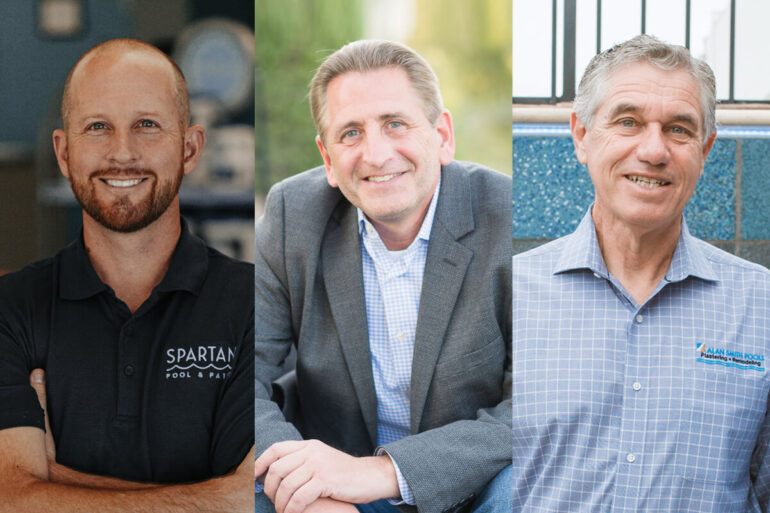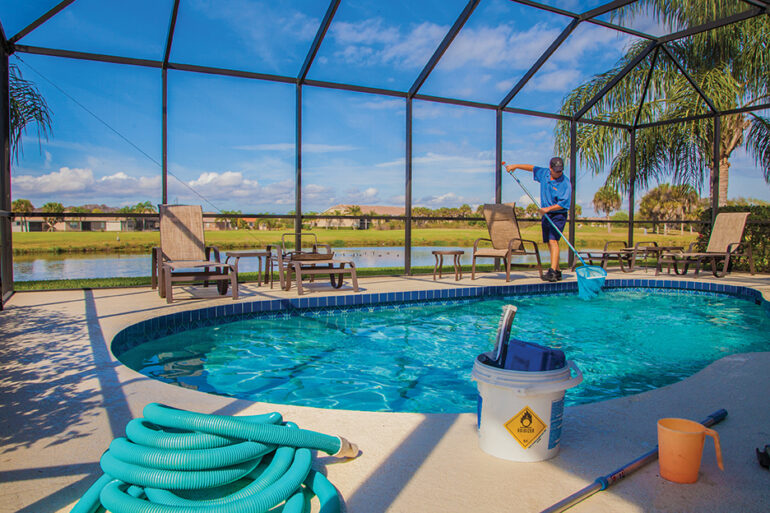Surprise-Free Service Rates: Priceless
Callahan Roach believes it brought flat-rate pricing to the pool and spa industry in 2000. Steven Dupuis, senior account manager for the flat-rate implementation company, started working with Callahan just three years later. Today, he traces his employer’s original muse back 102 years, to one of the world’s most iconic brands.
“Flat rate is nothing new,” he says. “The auto industry started it in 1935. Chevrolet was doing flat rates. If you brought your car into a dealership, they’d say, ‘It’ll cost you X dollars for a brake job, X dollars for a transmission.’”
As the operations manager at Florida Leisure Pool & Spa in Jonesville, Fla., Jeremy Hine cares little about upfront pricing on brake jobs and transmissions. But in 2006, he cared greatly about finding a solution to quell customer skepticism — and his own wasted time — documenting actual hours worked, parts ordered and quotes given.
“At the time,” Hine says, “I was eager to try all these new things, and so I bought the flat-rate program. Now, I don’t have to keep track of how much time I put into a job. One price makes the most sense to the customer. There’s no arguing or bickering.”
Those not regularly performing installations might wonder how much arguing or bickering actually goes on. The answer likely varies depending on the installer, his client, the job and other factors. But whether the customer only raises an eyebrow when handed a final bill, launches into a fiery curse-fueled tirade or says nothing but wonders if the installer’s just scammed him/her, every consumer wants to know how much what they’re buying will set them back.
“People want to know upfront what it’s going to cost them to have their repairs done,” Dupuis says, “to make it the way it was before, if not better. As consumers, we want to know what our exposure is financially.”
“Customers seem to like it,” operational cost-reduction analyst and owner of The Pool Guy, Wes Burdine says. “They know what they’re going to spend right away. And if additional things are going to pop up, they also know it’s going to cost this much.”
In short, the flat rate-model prevents surprises, which has historically been one of the biggest obstacles for service departments Burdine says.
“We show up and say, ‘This is about what it’s going to cost,’ ” Burdine says. “Then most of the time, it’s more than that. And there are some [contractors] out there who give the rest of us a bad reputation.”
The reason companies went to flat rates is because they had high overhead costs, Dupuis says. “The company has someone at the office taking calls and a serviceman going to visit them,” he says. “And he has to have a vehicle with the proper licensing and registration. What consumers don’t realize is that it costs companies a lot of dollars just to put someone in a vehicle who’s qualified.”
The company then must pay that qualified serviceman for all his hours between jobs.
“When we talk about cost,” Dupuis says, “we talk about unapplied time.”
Traffic, construction, getting lost, long journeys between portals and, yes, extended lunch breaks, feet-dragging and intentional detours: All can greatly impact how quickly an installer gets from one job to another.
He gets paid regardless, bopping around in a vehicle the company provided.
“So,” Dupuis says, “who pays for that?”
Flat-rate pricing allows companies to cover their overhead without charging for unnecessary parts or spending extra hours on a job.
“I don’t even really bother to see what a part costs me anymore,” Hine says. “If a temperature sensor costs $37 or $57 dollars, I don’t care. It installs at $168.”
But benefits for the service provider may extend beyond profitability: Hine, Burdine and Dupuis say flat-rate pricing also increases the technician’s consistency and efficiency.
“The technician,” Dupuis says, “already has the information on what to charge the customer. He already has the correct part number. If someone’s doing half a million [dollars] a year in service and flat-rate pricing makes them 10 percent more efficient, that is huge.”
Since 1998, those in the Kingsport, Tenn., region Burdine serves have known him as “The Pool Guy.” Now focused primarily on energy, the service piece of Burdine’s business has declined significantly. But The Pool Guy still talks a lot about customer peace of mind.
A price that doesn’t change brings peace of mind. But elsewhere in the world, we find a different kind of consumer. Best-selling social-sciences author Malcolm Gladwell calls him the “maven.”
“I occasionally have customers who want to see how much a part costs and if they can purchase it somewhere else,” Hine says.
Gladwell describes the maven as almost “pathologically helpful.” They take the time to gather information on their own and then share it with everyone. These people are not likely to be the consumers who achieve peace of mind from a flat rate. Instead, they’re more liable to research the specificities of the job and the contractor’s methods and then look for someone else to do it cheaper and more efficiently.
Flat-rate pricing can’t completely stop consumers from bickering and arguing with their contractors, but it may wipe out haggling.
Of course, a service company need not employ a Callahan Roach to write its pricing Bible, but some service companies do find a professionally printed sourcebook adds legitimacy to their quotes.
“At first, it bothered me dragging around the flat-rate book,” Hine says. “I did that for a few months. Then [as I memorized prices], I just started leaving it in the van.”
Callahan Roach makes no two manuals exactly the same. Every price in every book reflects what that individual installer needs to remain profitable, taking into account labor and part costs, and the contractor’s own markup. A database tracks parts for every major supplier, updating the number and price of those parts almost daily.
“Flat rate has always been a growing model,” Dupuis says. “Think of how many things you do in your life with flat-rate prices: cell phones, cable TV, even going to a restaurant and getting a steak. Do you get it for less because you ordered it rare?”






